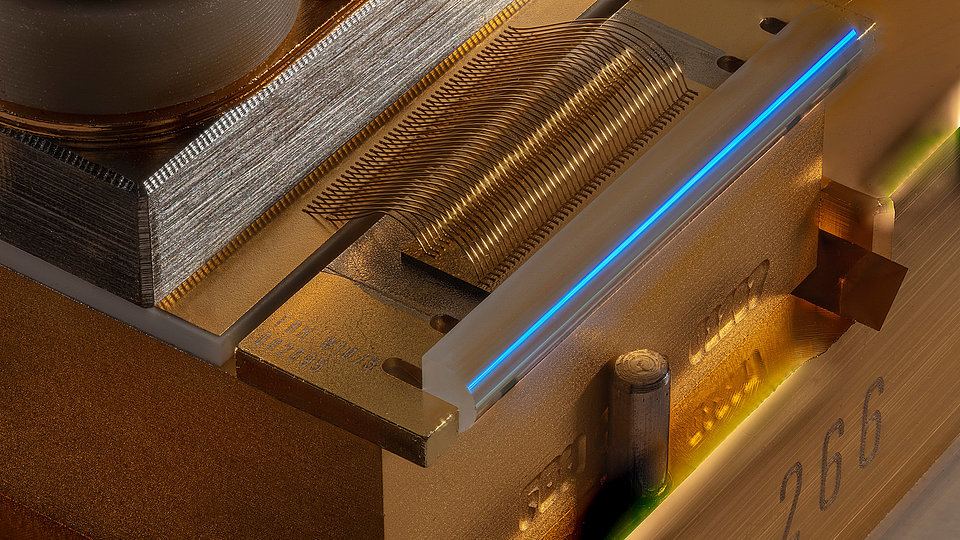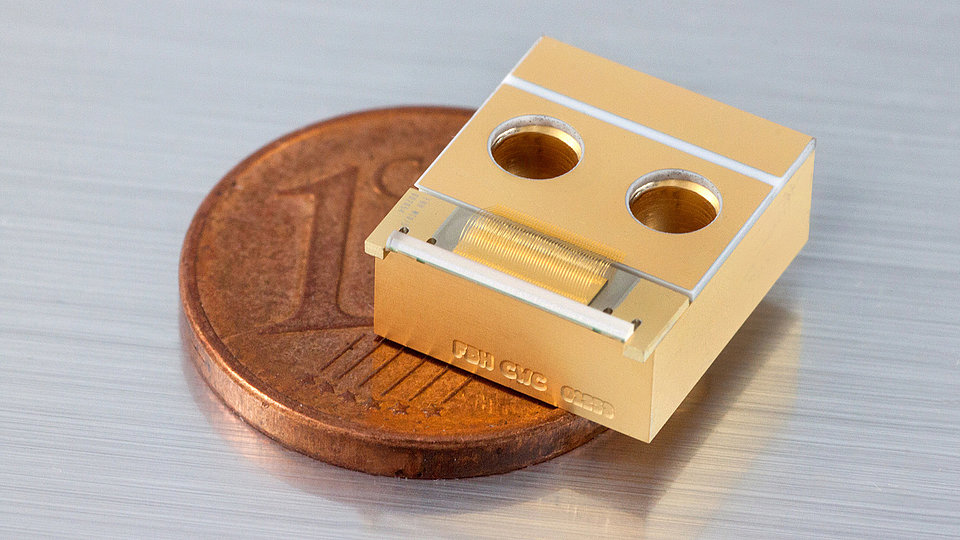Pump Lasers for Space Applications
For more than 20 years, we have been developing, qualifying and supplying laser diode modules for space applications - in particular for pumping of solid-state lasers (Nd:YAG). Outstanding features of these modules are their very high reliability and robustness under extreme operating conditions - due to mechanical and thermal stress as well as space radiation.
For more than 12 years, our CW pump laser modules have been used in satellites on various missions. The most important applications here are laser communication between satellites and space-based sensor technology using LiDAR for climate research.
Laser diode bench for continuous-wave (CW) operation
- Mini bars with 4–6 broad-area lasers
- Wavelength: 808.6 +/- 0.2 nm
- Output power: up to 0.5 W
- Heat-sink temperature: 20°C up to 50°C
- High reliability R > 99.99% of the module (over 15 years of operation)
Laser diode bench for pulsed (QCW) operation
- Half bars with 16 broad-area lasers
- Wavelength: 808 +/- 1 nm
- Output power: 63 W (typ.) up to 110 W peak power (e.g. 200 µs, 100 Hz)
- Heat-sink temperature: 37°C (typ.)
- High reliability R > 99.99% with over 4x109 shots (3 years of operation)
Low-noise diode lasers for satellite applications
- Diode laser array with 8–12 emitters
- Wavelength stabilization using internal DBR grating
- Wavelength: 808.6 +/- 0.2 nm
- Output power: 0.2 W up to 0.5 W under CW operation
- Heat-sink temperature: 45°C
- High reliability R = 99.9% (up to 15 years of operation)
Methane Remote Sensing LIDAR Mission (MERLIN)
Our lasers are used in satellites for space-based sensor technology for climate research. In the MERLIN mission, which is led by the French and German Space Agencies, a light-radar system (LiDAR) will be used to map the concentration of methane gas, which is harmful to the climate, in the Earth's atmosphere.


